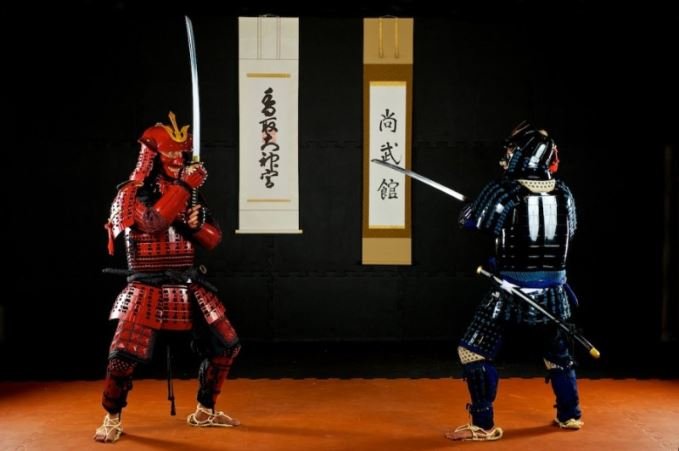Introduction to Katori Shinto Ryu
Katori Shinto Ryu is not just another martial art; it’s a treasure trove of ancient wisdom and combat techniques that have stood the test of time. Imagine stepping into a world where each movement tells a story, and every technique has been honed through centuries of practice. Among its many elements, the Katori Shinto Ryu block stands out as one of the most unique features. It’s not merely about defense; it embodies strategy, precision, and an understanding of human dynamics in combat.
The essence of blocking in this style goes beyond physical barriers—it reflects mental acuity and adaptability. Enthusiasts often marvel at how these blocks can transform simple movements into powerful defensive maneuvers. As we delve deeper into what makes Katori Shinto Ryu block so distinctive, you’ll discover why mastering this skill is essential for any practitioner looking to elevate their training and practical application in self-defense scenarios. Let’s explore the fascinating world behind this remarkable aspect of martial arts!
History and Origins of the Style
Katori Shinto Ryu, one of Japan’s oldest martial arts schools, traces its roots back to the 15th century. Founded by Choisai Ienao in Katori Shrine, it embodies centuries of samurai tradition and philosophy.
The style emerged during a time when martial techniques were essential for survival. It served not only as combat training but also as a means of spiritual development. The teachings were passed down through generations, preserving both technique and cultural significance.
Unique among Japanese martial arts, Katori Shinto Ryu integrates various weapons into its curriculum. This diversity reflects its adaptability and depth, allowing practitioners to engage with different forms while honing their skills.
As Japan transitioned through periods of peace and conflict, the school evolved alongside societal needs. Its historical richness remains evident today in modern practice settings around the globe.
The Importance of Blocking in Katori Shinto Ryu
Blocking is a fundamental aspect of Katori Shinto Ryu, serving as both a defensive and strategic maneuver. It goes beyond mere physical protection; it sets the stage for counterattacks and creates openings in an opponent’s defense.
Each block carries a purpose. They reflect the practitioner’s understanding of timing, distance, and intention. Mastering this skill can significantly alter the dynamics of combat.
The ability to effectively block allows practitioners to preserve their energy while redirecting attacks. This not only enhances personal safety but also empowers them to transition into offensive techniques seamlessly.
In Katori Shinto Ryu, blocking is more than an action; it’s a philosophy rooted in awareness and adaptability. Each movement teaches students about balance—both physically and mentally—making it essential for any martial artist on their journey toward mastery.
Unique Features of Katori Shinto Ryu Blocks
Katori Shinto Ryu blocks stand out due to their distinctive integration of traditional weaponry. Practitioners learn how to utilize various weapons, enhancing their blocking techniques while cultivating an understanding of distance and precision.
Footwork is another crucial element. The style emphasizes dynamic movement, allowing students to position themselves effectively against incoming attacks. This fluidity contributes significantly to the effectiveness of each block.
Timing plays a pivotal role as well. Katori Shinto Ryu trains practitioners not just in muscle memory but also in anticipating an opponent’s movements. Mastering this aspect elevates every block from mere defense to a strategic maneuver that can lead into counterattacks seamlessly.
The emphasis on distance management cannot be overlooked. Knowing when to engage or retreat enhances overall combat efficiency, making each block more than just a defensive action; it becomes part of a larger tactical framework within martial arts practice.
A. Use of Weapons
Katori Shinto Ryu is renowned for its intricate weapon techniques, which play a crucial role in mastering blocking skills. Practitioners learn to defend against strikes using various weapons like the katana, bo staff, and naginata.
Each weapon introduces unique dynamics that influence how blocks are performed. For instance, when wielding a sword, the angle and pressure of each block can redirect an opponent’s force effectively.
Training with weapons enhances reflexes and teaches students to anticipate movements. It also fosters adaptability as different scenarios require quick adjustments in technique.
Moreover, understanding the use of weapons deepens one’s comprehension of distance and timing—essential components in executing effective blocks during combat or sparring sessions. This mastery transforms basic defensive moves into powerful counterattacks while maintaining control over both one’s own body and the opponent’s motion.
B. Incorporation of Footwork
Footwork in Katori Shinto Ryu plays a crucial role in executing effective blocks. It’s not just about standing firm; it’s about being mobile and adaptable.
Each movement is intentional, allowing practitioners to shift their weight seamlessly. This fluidity enhances the ability to evade incoming strikes while positioning oneself for a counterattack.
The dynamic nature of footwork aids in maintaining optimal distance from an opponent. Practitioners learn to maneuver quickly, ensuring they’re always prepared for any scenario that arises during training or combat.
Additionally, incorporating footwork into blocking drills develops coordination and balance. As students practice various stances and transitions, they become more comfortable on their feet, fostering confidence in their abilities.
This integration transforms simple defensive maneuvers into powerful techniques that can change the course of engagement dramatically.
C. Emphasis on Timing and Distance
Timing and distance play a crucial role in the effectiveness of Katori Shinto Ryu blocks. Mastering these elements allows practitioners to anticipate their opponent’s movements, creating openings for counterattacks.
Understanding when to execute a block can be the difference between success and failure in combat. Practitioners learn to gauge an attacker’s rhythm, responding at precisely the right moment. This is not just reactive; it involves reading the situation dynamically.
Distance management complements timing beautifully. Knowing how far away an opponent is helps dictate whether to engage or evade. A well-timed block executed from the correct distance can neutralize threats while placing you in an advantageous position for follow-up techniques.
In Katori Shinto Ryu, this synergy between timing and distance transforms blocking into a strategic art form rather than mere defensive action. It’s about feeling your way through each interaction, refining instincts with every practice session.
Benefits of Practicing Katori Shinto Ryu Blocks
Practicing Katori Shinto Ryu blocks offers numerous benefits that extend beyond self-defense. One key advantage is the development of physical strength. Engaging in block techniques requires muscle coordination and endurance, enhancing overall fitness.
Mental focus plays a crucial role as well. Students learn to concentrate intensely on their movements and surroundings, sharpening their awareness. This heightened mindfulness translates into everyday life, improving decision-making skills.
Additionally, Katori Shinto Ryu blocks foster discipline and patience. As practitioners strive for precision in their techniques, they cultivate a sense of commitment to continuous improvement.
The social aspect cannot be overlooked either. Training often occurs in groups or dojos, creating a supportive community where individuals share ideas and experiences while building camaraderie.
These multifaceted benefits contribute not just to martial arts proficiency but also enrich personal growth outside the dojo environment.
Techniques and Training Methods for Improving Blocking Skills
Consistent practice is key to enhancing blocking skills in Katori Shinto Ryu. Begin with basic drills that focus on individual blocks. Repetition helps to build muscle memory.
Incorporate partner exercises that simulate real attacks. This approach allows you to refine timing and distance while improving reaction speed. The interaction also provides instant feedback.
Footwork is crucial; therefore, integrate movement into your blocking techniques. Practice stepping or sliding as you block to develop fluidity and adaptability during sparring sessions.
Utilize weapons in your training for a realistic experience. Different weapon types can change the dynamics of blocking, offering diverse challenges and scenarios.
Video analysis can be valuable. Record your practices to identify areas that need improvement. Observing yourself will deepen understanding and promote growth in technique execution.
Applications in Self-Defense
The applications of Katori Shinto Ryu blocks extend far beyond the dojo. Practicing these techniques not only enhances your martial arts skills but also provides practical self-defense strategies. When faced with an attack, the blocking techniques taught in Katori Shinto Ryu can be crucial for protection.
These blocks are designed to redirect incoming force rather than just absorb it. This principle allows practitioners to create openings for counterattacks while neutralizing threats effectively. The emphasis on timing and distance ensures that you can anticipate movements and respond swiftly, giving you a strategic edge in a potentially dangerous situation.
Moreover, learning how to incorporate footwork into your blocking maneuvers improves mobility during confrontations. By mastering this aspect, you become more agile, making it harder for an opponent to land effective strikes.
Whether facing one attacker or multiple assailants, the principles learned through Katori Shinto Ryu provide valuable insights into maintaining control and composure under pressure. As such skills translate into real-life scenarios, they make practicing this ancient art form not just beneficial but essential for those looking to bolster their self-defense capabilities.




















